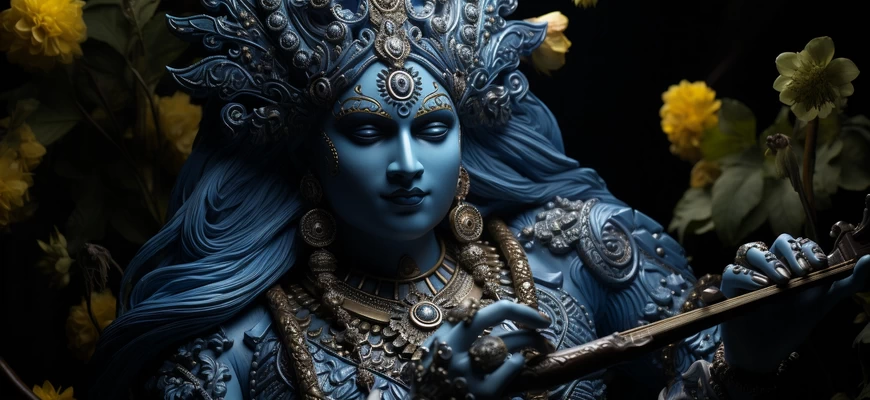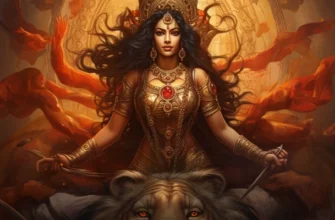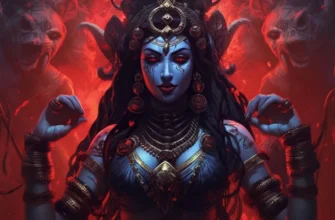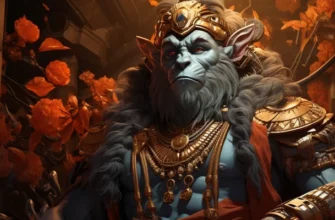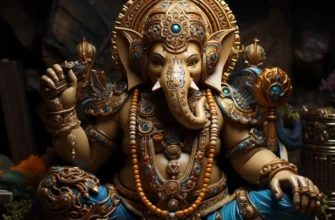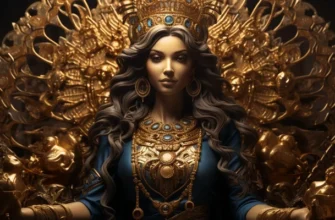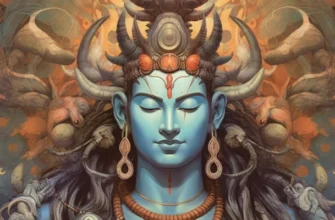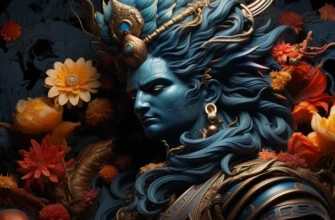The Indian god Krishna is one of the most revered gods in Hinduism. He is considered the embodiment of love, joy, and spiritual wisdom. The legends of his childhood and exploits described in the Bhagavata Purana leave an indelible mark on Indian culture. His image is also reflected in art, literature and contemporary popular culture.
- Origin and History of Krishna
- Mythological sources about Krishna
- Varieties and interpretations of myths about Krishna
- The role of Krishna in Indian history and culture
- Legends and stories about Krishna
- The Role of Krishna in the Mahabharata Epic
- Kṛṣṇa as Leader and Teacher
- The Cult of Krishna in the Modern World,
- Krishna’s Influence on Indian Culture and Religion
- The spread of the Cult of Krishna outside India
- Conclusion
Origin and History of Krishna
The origin and history of Krishna are rooted in ancient Indian mythology and legends. According to Indian texts, Krishna was born into the Yadu family in the Matura region. His life was associated with important historical events, such as the Great War in the Mahabharata, where he acted as an advisor and leader.
The story of Krishna tells of his childhood, early years, deeds, and philosophical teachings, which were preserved in the Bhagavat Gita and Bhagavati Purana. His deeds and teachings became the basis for the formation of Hinduism, which have a significant impact on Indian culture and religious philosophy.
Mythological sources about Krishna
The mythological sources about Krishna include a variety of textual works and sacred texts, the main ones of which include:
“The Bhagavat Gita: This sacred Hindu textual part of the Mahabharata contains a dialog between Krishna and the warrior Arjuna. It contains the basic principles of Krishna’s philosophy.
“Bhagavati Purana: This text is one of the most important sources of information about Krishna. It contains legends about the childhood, youth, and deeds of Krishna.
“Srimad Bhagavatam: Another important Puranic text that highlights the life and activities of Krishna.
“Harivamsha: This epic poetic text also contains legends about Krishna and his divine exploits.
These sources together create a rich image and reveal various aspects of the life and activities of the Indian god Krishna in mythology.
Varieties and interpretations of myths about Krishna
The Krishna myths have a variety of varieties and interpretations, which include:
Childhood legends: These myths describe the childhood and early years of Krishna, his games and life in the countryside.
Heroic exploits: These stories tell of Krishna’s battles and exploits, including his role in fighting demons and defending truth and justice.
Philosophical interpretations: These include dialogues from the Bhagavad Gita that outline the basic principles of Hinduism, such as dharma, karma, yoga, and bhakti.
Love legends: These myths tell the story of the romantic relationships of Krishna and in particular his most famous lover, Radha.
These varieties and interpretations contribute to an understanding of different aspects of Krishna’s personality and his importance to Hindu tradition and culture.
The role of Krishna in Indian history and culture
The role of Krishna in Indian history and culture is extremely important and influential. He is a symbol of love, wisdom, and loyalty, and his philosophical teachings, especially those in the Bhagavad Gita, have become the basis for the development of Hinduism and yoga.
Krishna also played a crucial role in the Mahabharata, one of the most important epic works of Indian literature, where his teachings on dharma and karma were central themes.
In contemporary Indian culture, Krishna continues to be an object of worship and faith, and his image is reflected in art, music, dance, and folklore. He leaves a huge mark on world culture that reflects his enduring religious and cultural significance.
Legends and stories about Krishna
The legends and tales of Krishna include many fascinating stories, including:
The Birth of Krishna: The legends of his birth when his parents were hiding him from the evil lord Kaṁsa.
Childhood and life in the village: Descriptions of his carefree games and his wonderful creative adventures.
Feats and Battles: Stories about his heroic battles with demons and his protection of people from evil.
Romantic relationships: Legends of his love affair with Radha, reflecting the spiritual union of the soul with the divine.
These legends form the image of Krishna as a divine figure who embodies love, wisdom, and the forces of goodness, and are an integral part of Indian culture and religion.
The Role of Krishna in the Mahabharata Epic
In the Mahabharata epic, the role of Krishna is central and decisive. He acts as an advisor, teacher, and leader for the Pandavas, helping them in their fight against the Kauravas. The dialogues between Krishna and the warrior Arjuna, known as the Bhagavad Gita, incorporate philosophical principles of Hinduism such as dharma and karma that have influenced Indian thought and culture.
Krishna assisted the Pandavas in many key scenes of the epic, including military strategies and various deeds that helped defeat the Kauravas in the Great War. His wisdom and support were crucial for the Pandavas in their journey to victory and good governance.
Kṛṣṇa as Leader and Teacher
Krishna appears as a leader and teacher in numerous ways:
Leader: He was a strategist and military commander in many battles where his wisdom and experience helped him and his supporters achieve victory.
Teacher: Through the Bhagavad Gita, he became a teacher to Arjuna, teaching him the principles of dharma, karma, and bhakti. His teachings became the basis for the philosophy of Hinduism and yoga.
As a leader and teacher, Krishna played a key role in shaping Indian culture and spirituality, and his teachings have had a profound impact on the philosophy and moral values of many generations.
The Cult of Krishna in the Modern World,
In today’s world, the cult of Krishna remains alive and active, both in India and in other countries. His teachings on spirituality, moral values, and yoga continue to influence many devotees around the world. Many people practice bhakti yoga, which is based on faith and devotion to Krishna.
The cult of Krishna is also reflected in art, music, and literature, and his image is often found in movies and television. Festivals dedicated to Krishna, such as Janmashtami (his birthday), are important events in the Indian calendar and attract devotees from all over the world.
Krishna’s Influence on Indian Culture and Religion
The influence of Krishna on Indian culture and religion is significant and profound. He has become a symbol of faith, love and wisdom, and his teachings on dharma, karma and bhakti have become the basis for the formation of Hinduism and its philosophy. The cult of Krishna permeates every aspect of Indian life, from art and literature to architecture and music.
He also contributed to the development of the Bhakti movement, which emphasizes personal devotion to God. His teachings inspire people to this day to practice acts of kindness and devotion, which influences the formation of the Indian moral and ethical system.
The spread of the Cult of Krishna outside India
The cult of Krishna is widespread outside of India and has a great influence on world culture and religious thought. Many people in different countries practice bhakti yoga and worship Krishna as a symbol of spirituality and wisdom.
His teachings on dharma, karma, and bhakti are reflected in various forms of art, literature, and music around the world. Festivals dedicated to Krishna are also celebrated outside of India, attracting the attention and faith of devotees from a variety of cultural and religious traditions. His unique legacy continues to amaze and inspire people around the world.
Conclusion
Krishna, the Hindu god, is a central figure in Hinduism, with his teachings and legends permeating Indian culture and religion. His role as a leader, teacher, and symbol of spirituality inspires great admiration and devotion among worshippers around the world. Krishna’s legacy leaves an indelible mark on world culture, reflecting his greatness and importance in the spiritual pantheon of humanity.
Krishna leaves an indescribable legacy in world culture, reflected in his role as a symbol of love, wisdom, and spirituality. His teachings and legends inspire millions of people around the world to this day. His influence on Indian culture, philosophy, and religion is integral and extremely significant. His image remains an important element of the religious and cultural landscape in India and beyond.
